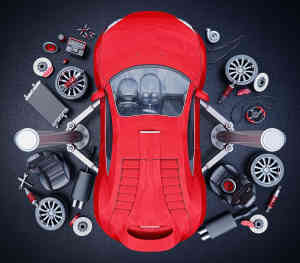Ford, Bentley, Lamborghini, Limo… well, these are the names the world drools over. But to know where the real action is taking place, you must sneak into the world of microcars. Microcars – a testimony on how ‘small’ can be the new ‘cool’ – has redefined speed, style, glamor, and most of all what can be done for a greener earth!
With the automotive industry being one of the greatest contributors of the GHG, it only makes sense that all the major names in this sector switch to greener and smarter technologies. And the building of microcars is one small yet crucial step in this direction. The concept of microcars came into the limelight post the World War II when Europe was reeling under the great economic depression. At that point of time, all one wanted is a cheap means of personal transport. But today, it is more about reducing pollution, bringing down the congestion on roads, and tackling parking issues, which have pushed the demand for micro cars. Perhaps due to these pressing issues, market researchers at Technavio predict the global market of microcars to grow at a CAGR of little more than 3% by 2021.
What makes a car ‘micro’?
Without falling into the trap of a ‘standard’ definition of microcar, let’s just understand that any car having the following features gets the tag of being a ‘micro’ car:
- Engine size does not exceed 1 liter.
- Car’s length is no more than 3.6 meters.
- Equipped with seating for two.
Well, this is the basic build of a microcar. Also, known as ‘Kei cars’ in Japan, and ‘bubble cars’ in the UK micro cars today have a huge customer base of its own. Taking advantage of its popularity among the rising middle class, many automotive giants have ventured into building sleek and sophisticated microcars. Thus, what used to be discarded and left to rot in the garage, has today emerge as a panacea for all our traffic woes.
Are microcars foolproof success stories?
Well, it is quite normal for a layperson to believe that perhaps microcars are the ultimate solution to better, cleaner, and greener environment. But then there is more to microcars story than meets our eyes.
To begin with, car makers are yet to attain the sweet balance of right technology and style in these ‘little bubbles on wheels.’ Secondly, the safety issue is one area which needs a lot of work to be done. Crash tests have shown how micro cars have suffered greater damage when compared to the bigger cars. This is a major concern which calls for a lot of research work. Lastly, with improvements in public transport systems, especially in the developing world, only time will prove how long will the micro cars stay popular.
Until then, let us just enjoy our ride on the refreshingly cheap, urban-friendly, and toy-like motors of the microcars.
To Get a Detailed Analysis of the Global Microcars Market




